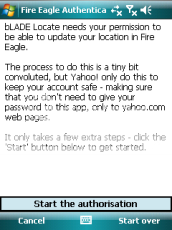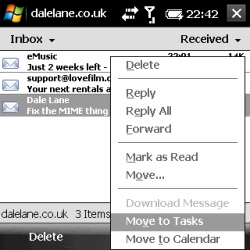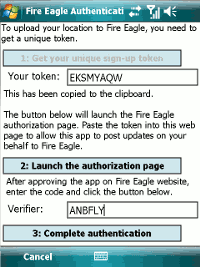I wrote a post a couple of weeks ago in which I whined about the difficulties in creating a good user experience for a mobile client that authenticates with an OAuth provider.
I was pleasantly surprised (and a little honoured!) to get a comment on the post from Chris Messina reminding me that the way to address the usability issue isn’t to revert back to using usernames and passwords, but for us to all work to improve the usability of OAuth.
Sufficiently inspired, I went back and had another go.
It’s still not quite there, but I think it’s better.
As Andy pointed out last time, not everyone has a Windows Mobile device to try my code on, so this time I tried recording a screen capture of it.
 This is my excuse, at any rate, for sharing
This is my excuse, at any rate, for sharing  A
A 
 Last night, I
Last night, I  I wrote a
I wrote a